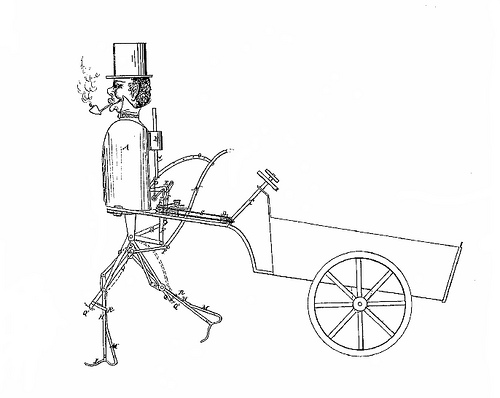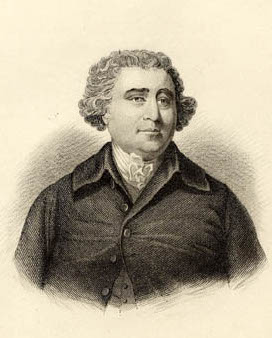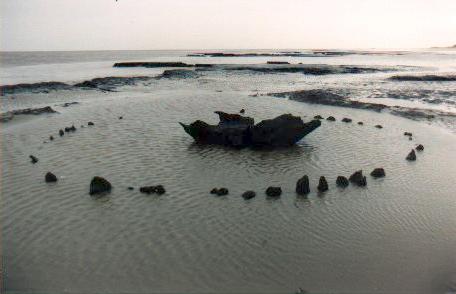- Jimmy Carter was the first U.S. president born in a hospital.
- Hamlet has 1506 lines, fully 39 percent of the play.
- 736 = 7 + 36
- NOOK combines two antonyms.
- “Everything that deceives may be said to enchant.” — Plato
Steampunk Chauffer

Zadoc Dederick and Isaac Grass quietly patented this as an “improvement in steam-carriage” in 1868, but the details are pretty sensational: They’d invented a mechanical man with jointed legs who could pull a cart, lift its legs to clear obstacles, and even run backward.
The boiler is in the torso. “It is unnecessary to describe this part of the mechanism, as there is nothing peculiar in it.”
Unquote
“I always find it more difficult to say the things I mean than the things I don’t.” — Somerset Maugham
Claws and Effect
From Lewis Carroll’s first textbook in symbolic logic:
- No kitten that loves fish is unteachable.
- No kitten without a tail will play with a gorilla.
- Kittens with whiskers always love fish.
- No teachable kitten has green eyes.
- No kittens have tails unless they have whiskers.
What conclusion can be drawn from these premises?
Cloudy

All rational beings believe in their own existence, whether or not they actually exist. Sherlock Holmes believes that he exists, but he is wrong. God too believes in his own existence–and his omniscience makes it impossible that he is mistaken. Therefore God exists.
On the other hand: Perfection is essential to godhood, and a perfect God must be perfectly virtuous. But virtue implies overcoming pain, fear, and temptation, and a God who is subject to these ills is less perfect than one who is not. Thus perfection is impossible, and God cannot exist.
Asked what he would say to God on Judgment Day, Bertrand Russell said, “Not enough evidence, God! Not enough evidence!”
New-Minted Coins
Words of which William Shakespeare was the only recorded user, at some point, according to the Oxford English Dictionary:
- bepray
- bragless
- compulsative
- conceptious
- confineless
- continuantly
- correctioner
- disliken
- exceptless
- exsufflicate
- foxship
- insultment
- oathable
- offendress
- omittance
- overgreen
- overstink
- questant
- razorable
- successantly
- thoughten
- uprighteously
- wenchless
In Inventing English, Stanford literary historian Seth Lerer credits him with inventing nearly 6,000 new words.
What Am I?

A bewildering riddle by the English statesman Charles James Fox (he of the widely spaced aunts):
I went to the Crimea; I stopped there, and I never went there, and I came back again. What am I?
Symmetric Milestones
What’s unusual about these numbers?

Each series is spaced evenly on the number line:

Each number is a palindrome.
And each is prime.
Strike Three
After cataloging her disappointment with Europe, Asia, and Australia, xenophobic travel writer Favell Lee Mortimer finished her world survey with Far Off, Part II: Africa and America Described (1854). What did she discover about the intriguing people and exotic customs of these remote continents?
- “It is a rare thing in Egypt to speak the truth.”
- “Those who wish to visit Nubia ought to go there in a boat, for there is no other pleasant way.”
- “Perhaps there is no Christian country in the world as ignorant as Abyssinia.”
- “Cruelty is the chief vice of the Caffre.”
- “Newfoundland is a dreary abode.”
- “Though Mexico is so beautiful at a distance, yet the streets are narrow and loathsome, and the poor people, walking in them, look like bundles of old rags.”
“Washington is one of the most desolate cities in the world: not because she is in ruins, but for the opposite reason — because she is unfinished. There are places marked out where houses ought to be, but where no houses seem ever likely to be.”
Seahenge

In 1998, tides exposed a ring of Bronze Age timbers off the coast of Norfolk.
The monument appears to have been created in 2049 B.C., probably in a salt marsh that was later overrun by the sea.
What was its purpose? Who knows?
